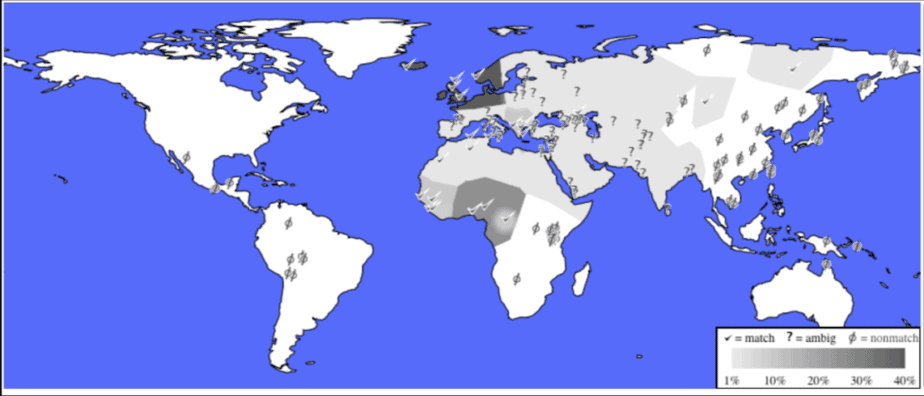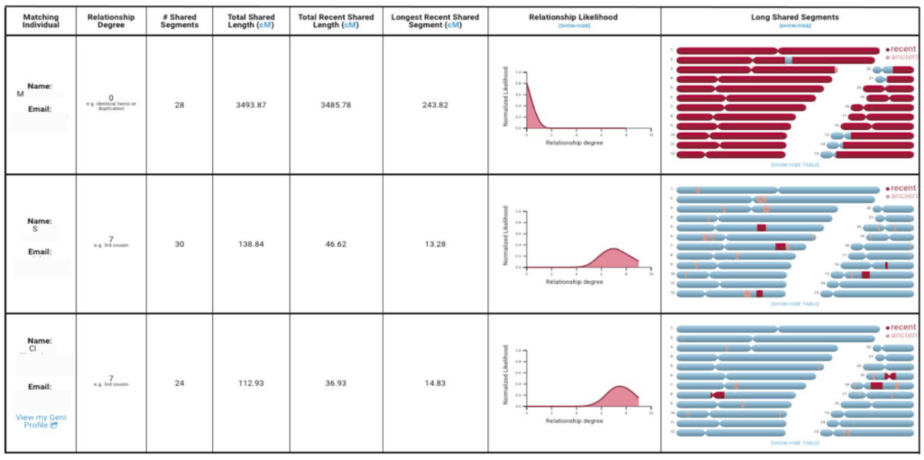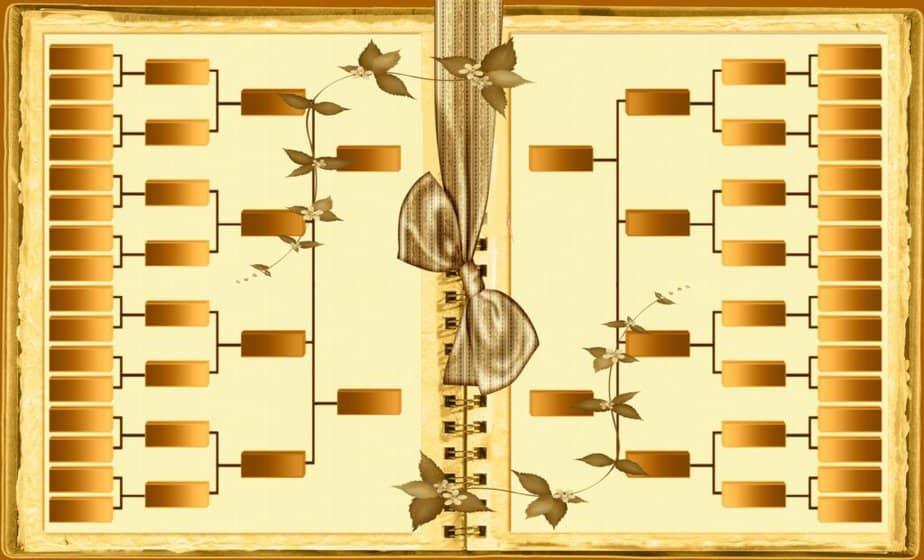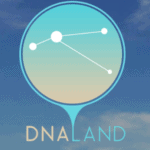7 Facts from our DNA Land Review
- Location: USA
- Products: DNA data upload to DNA.Land for trait and ancestry analysis
- Reports: DNA.Land offers ancestry breakdown, relative finder, several trait reports
- Report delivery: trait reports are delivered through the website
- Cost: Free
- Privacy: intends to use collected genetic data for scientific research projects
- Alternatives: Nebula Genomics (free expanded DNA analysis; the most affordable 30x whole genome sequencing)
This review is written with the intent to be as unbiased as possible. However, it represents the opinion of an individual reviewer and is therefore subjective. Furthermore, at Nebula Genomics we seek to educate the public about the benefits of Whole Genome Sequencing. Information about our Whole Genome Sequencing DNA test is therefore incorporated into the review.
August 4, 2022
Table of contents
Edited by Christina Swords, Ph.D.
As of Nov 13, 2021, DNA Land is no longer operating, and the site has been shut down. The reason stated by the founders was that the team members started new jobs and changed their career focus, making it impossible to keep up with site maintenance.
This post was last updated on December 30, 2020, and some information might be outdated.
Introduction
DNA Land was founded in 2015 by a group of researchers from the New York Genome Center and Columbia University. However, in October 2019, the company shut down as an academic institution website and relaunched as a for-profit company.
The team still comprises its founding members: Dr. Yaniv Erlich, Dina Zielinski, and Assaf Gordon. Due to the strict human-subject regulations, it deleted all datasets that were collected until September 30th, 2019.
DNA Land partnered with the National Breast Cancer Coalition (NBCC) in 2017 to better understand the genetic risk for breast cancer. In addition, Elrich is working with data from DNA Land and the website Geni.com to build the world’s largest family tree.
The DNA Land Service
What is DNA Land? Volunteers must create an account with a DNA Land login and sign a 1500-word consent form. The site fully discloses the risks and benefits of sharing genetic data without legal jargon.
The website collects email addresses, genomic data, basic demographic information about the participant and immediate family, and traits. It also stores phenotypes by providing questionnaires addressing physical and health traits. Each questionnaire pertains to a single trait, and users may choose which questionnaires to complete.
The company offers free services as incentives to users who upload raw data. These include (i) an ancestry composition report, (ii) a relative finder, and (iii) prediction of interesting physical and wellness traits. It also imputes genetic information, allowing users to find genetic variations that were not part of the original file.
The company also promised to add more unique features to its website.
Review of DNA Land Reporting
You start with uploading data to the website. When you upload your raw DNA file, the site provides reports on ancestry, relatives, traits and imputation.
Review of DNA Land ancestry report
It uses a reference panel of over 6000 individuals organized into 40 populations (including Native Americans) to find ancestry. The “Ancestry” program looks for similarities between user DNA composition to individuals in the reference populations.
The ancestry report gives a breakdown of where the genes originate. It estimates ethnicity and provides a map of locations of closest DNA matches. In addition to the ancestry charts, a map showing the matched reference populations across the globe is offered.

An actual breakdown of each population included or excluded from the report is also included. These also contain more information about the genetic makeup of these groups.
Review of DNA Land relative finder report
Users can also find their closest relatives after uploading genomic data. The service calculates the similarity in shared DNA with different relatives. These calculations use the number of shared DNA segments, and the total length of DNA shared to determine your matches. The report also includes a visualization of the segments that you share.

Review of DNA Land traits prediction report
DNA Land reports on the associations between genetic variants called single nucleotide polymorphisms (SNPs) and biological traits. The traits predicted are categorized as wellness (chronotype, coffee consumption, education) and physical (eye color, height, and near-sightedness).
Each report predicts a trait based on the user’s genomic information. It also compares the likelihood score with the available information in the database.
First, the users take a survey before receiving the prediction DNA results. This allows the users to test the accuracy of the predictions made by the website.
An example of a survey is given:
The report generated by DNA Land based on the genomic data has three components.
The first segment of the report shows how likely a certain condition is for users, based on known genetic variants. Examples of this could be, using known genetic variants to suggest you are likely a morning person. The graphic also shows how this prediction compares with other users.
Second, the company details what genetic variants or SNPs (Single Nucleotide Polymorphisms) contribute to the predicted score of the trait. Also included is how large that contribution is. Users can also visualize the locations of these SNPs on the chromosomes by exploring the effect sizes graph.
Third, the report tabulates the most significant SNPs in the analysis. This information includes a detailed breakdown from supporting research. This includes the effect of each SNP and the genes where the variants are located.
This is interesting information available from the genome data to study the genetic contribution towards human traits. Locations of specific SNPs may indicate the genetic contribution towards the trait.
DNA Land Pricing
All the services offered by the company are free. Users can access their reports within a few hours to days after uploading their genomic data. Additional reports can be obtained by filling out short surveys that help researchers in their studies.
Review of DNA Land Privacy
Terms of consent assure users’ complete privacy concerning personal information, individual survey results, or any uploaded user data. Users can link their social media profiles with the website, but the data is not shared by the company.
The company may share personal data with selected partners who maintain reasonable security practices, respect consent, and comply with regulations. The users can opt out of this option, although personal data can be released if required by law.
Users who link their Geni.com accounts (a website for building family trees) can find information about other users with linked accounts.
The company deleted stored data in the academic version when it became commercialized in 2019.
DNA Land in the News
The company has enjoyed ample media coverage, mostly before separating from Columbia University and the New York Genome Center. It has also published its genetic findings using user data in esteemed journals like Nature Genetics and eLife.
Crowdsourced genomic resource DNA Land relaunch company
Scientists hope to attract millions to DNA Land
Yaniv Erlich gave a Ted talk in 2018 on building the world’s largest family tree using information from DNA Land and Geni.com.
DNA Land partnered with Luna DNA, a company that enables its users to contribute to research and get compensated. Check out our Luna DNA review!
Other DNA Land Reviews
How accurate is DNA Land? From multiple DNA Land Reddit threads, users have found 23andMe more reliable in terms of accuracy. However, there’s general positive feedback owing to the fact that it’s a free service and provides unique genetic features that are particularly interesting for genetic genealogists. Some reviews are:
“Better user privacy than GEDMatch. More user friendly. Their ancient vs recent DNA analysis is useful in determining whether a person is a recent or distant match.
Dr. Yaniv Erlich responds to feedback and is very involved with the genetic genealogy community. I just wish it had more users.”
“It’s free, but the DNA matching isn’t great, and the database is small. They have matches for me on that site that are also on other sites, but with cm numbers that are crazy high.”
There aren’t many reviews of the new commercial version of the website.
Pros and Cons
Pros
- It is free
- Continuing improvement in reporting features more detailed and visually appealing ancestry reports
- Unique features like imputation (using statistical inference to deduce unknown genotypes based on known ones) and shared genetic segments
- Users seem to have found more relatives than with other testing companies
- Users feel more connected to the ongoing genetic research by providing their genomic information
Cons
- Small genomic database
- Ancestry and trait results were not as accurate when compared to other testing companies
- Many initial users found few or no matched relatives
DNA Land vs. Other Genetic Tests
We conclude our DNA Land review with comparisons to Nebula Genomics and other genetic testing companies.
| DNA Land | 23andMe | Ancestry DNA | Nebula Genomics | |
| DNA testing | Uses raw data files obtained from other companies | Uses genotyping instead of sequencing | Uses genotyping instead of sequencing | Offers 30x whole genome sequencing. Also, provides free raw DNA data upload |
| Data upload options | Free DNA report from uploaded data | No data upload options | No data upload options | Free expanded DNA report from uploaded user data |
| Regularly updated reporting | No | No | No | Yes (learn more) |
| Deep ancestry (Y-CHR and mtDNA sequencing) | No | No | No | Deep ancestry reporting with full Y chromosome and mtDNA sequencing |
| Imputation | Includes imputation in the report processed from user uploaded data | No. Need to use other resources for imputation | No. Need to use other resources for imputation | Yes. Provides imputation results in expanded reports |
Other companies
Other DNA upload sites you make like are:
- Ancient DNA Origins (DNA upload for comparison against ancient civilizations)
- BioStatus Health (upload apps for personalized fitness and nutrition)
- Dash Genomics (personalized Alzheimer’s disease risk)
- DNA Painter (for genealogy – the first one is free and subscriptions are available for others)
- GedMatch Genesis (free DNA upload and paid advanced options)
- Genetic Genie (free for health reporting)
- Genomapp (DNA analysis app and individual reports)
- LifeDNA (upload and health reports, DNA kit and updates available at an additional cost)
- LiveWello (variance reports and community sharing)
- Living DNA (free upload for ancestry)
- MyHeritage (free upload for genealogy)
- MyTrueAncestry (free upload to learn your connection to ancient populations)
- NutraHacker (DNA upload for reports on certain health conditions)
- Silverberry Genomix (free upload and options to purchase additional reports)
- StrateGene (detailed reports based on biological pathways)
- TrueReport (personalized functional medicine)
If you have whole genome sequencing data, also take a look at YFull ($25 – $49 for Y-DNA and mtDNA).
Ancestry
If you’re interested in ancestry or genetic genealogy you should also look at:
- 23andMe (ancestry, relative finder, and health)
- 24Genetics (various tests for health, ancestry, sports, skin, pharmacogenomics, WES, and WGS)
- African Ancestry (various lineage test for African descendants)
- AncestryDNA (ancestry, relative finder, and health)
- CRI Genetics (ancestry test up to 50 generations)
- DNA Ancestry Project (Y DNA and mtDNA for genetic genealogy)
- DNA Painter (first profile is free and subscriptions are available for others)
- GedMatch Genesis (free DNA upload for genetic genealogy and paid advanced options)
- Living DNA (free upload for ancestry)
- MyHeritage (ancestry test, additional subscriptions for access to genealogy tools)
- WeGene (for Asian ancestry)
Also, check out our GEDmatch tutorial to learn how to use this powerful tool!
Did you like our DNA Land review? You can read more reviews on our blog and check out our complete guide to the best DNA test kit and other home tests.

